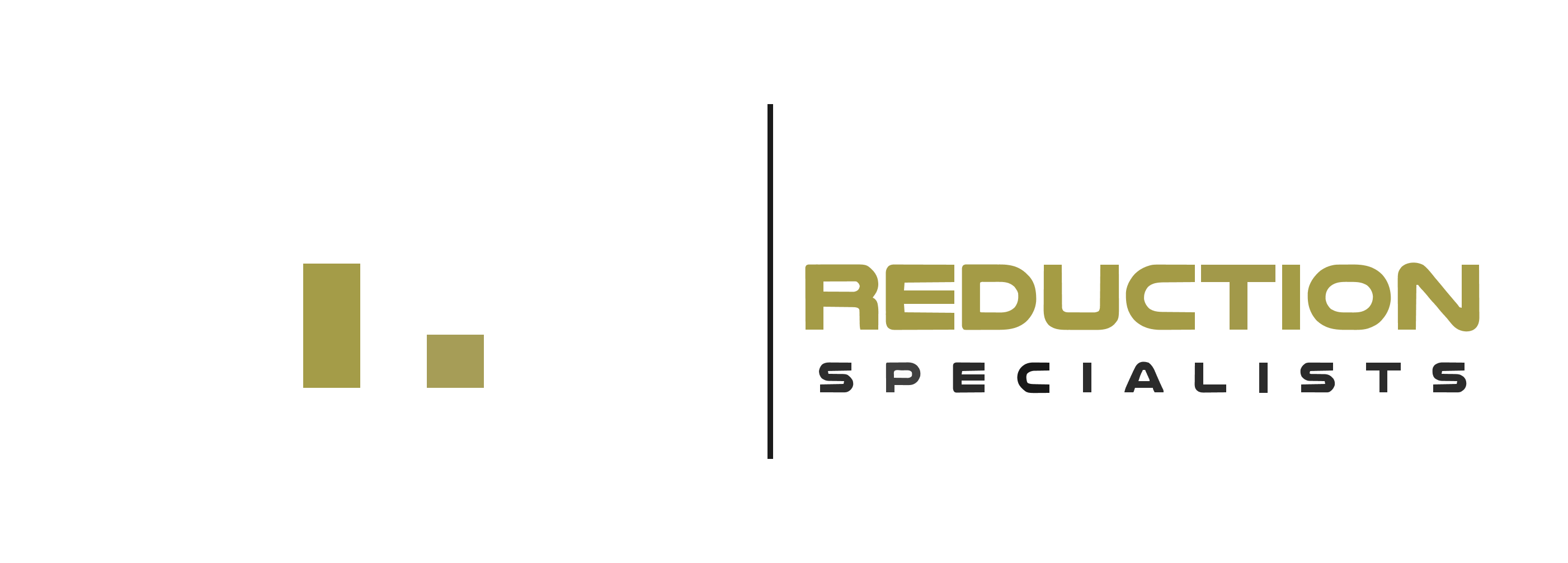RMD Tax Planning: 7 Expert Strategies to Minimize Penalties and Maximize Savings
Navigating Required Minimum Distributions (RMDs) can feel like walking through a tax maze. But here’s the good news – with the right strategies, you can turn this tax obligation into a smart financial opportunity. The key to successful RMD tax planning lies in understanding and implementing effective strategies to minimize penalties while maximizing your retirement savings. Whether you’re approaching the RMD age of 73 or already taking distributions, these 7 expert-backed strategies will help you optimize your retirement withdrawals. From timing your distributions strategically to leveraging qualified charitable distributions, we’ll guide you through proven methods to reduce your tax burden. Did you know that missing an RMD deadline could cost you a 25% penalty? Don’t worry – we’ve got you covered with actionable tips to help you avoid costly mistakes and make the most of your retirement savings. Let’s dive into these game-changing strategies that successful retirees use to master their RMD planning.
Key Takeaways:
- – The current RMD age is 73, and failing to take distributions can result in a significant 25% IRS penalty on the required amount.
- – Strategic timing of distributions from your traditional IRA and other tax-deferred retirement accounts can help minimize your taxable income and optimize tax efficiency.
- – Qualified Charitable Distributions (QCDs) offer a tax-efficient strategy to satisfy RMD requirements while supporting charitable causes.
- – Working with a financial advisor or tax professional can help ensure compliance with RMD rules and maximize tax-saving opportunities.
- – Understanding life expectancy factors and proper calculation of RMD amounts is essential for accurate retirement planning.
Understanding Required Minimum Distributions (RMDs)
Required Minimum Distributions (RMDs) are mandatory withdrawals that the IRS requires you to take from your retirement accounts once you reach a certain age. These distributions ensure that retirement savings, which have enjoyed tax-deferred growth, eventually get taxed.
Age Requirements and Recent Changes
The SECURE 2.0 Act has updated the RMD age requirement. If you turned 72 after December 31, 2022, you must start taking RMDs at age 73. This change reflects the government’s recognition of increasing life expectancy and longer working careers.
Accounts Subject to RMDs
Not all retirement accounts require RMDs. These withdrawals typically apply to:
– Traditional IRAs
– SEP IRAs
– SIMPLE IRAs
– 401(k) plans
– 403(b) plans
– 457(b) plans
– Profit-sharing plans
Notably, Roth IRAs are exempt from RMDs during the original owner’s lifetime, making them valuable tools for estate planning.
Basic Distribution Rules
Your first RMD must be taken by April 1st of the year following the year you turn 73. For subsequent years, you must take RMDs by December 31st. The amount you need to withdraw is calculated based on your account balance and life expectancy factors provided by the IRS.
Penalty for Non-Compliance
Missing an RMD deadline can be costly. The IRS imposes a penalty of 25% of the amount not withdrawn. However, if you correct the mistake promptly, this penalty may be reduced to 10%. This significant penalty underscores the importance of staying on top of your RMD obligations.
???? Key Takeaway: RMDs are mandatory withdrawals from retirement accounts starting at age 73, with specific rules for different account types and substantial penalties for non-compliance, making proper planning essential for retirement success.
Retirement Accounts Subject to RMDs
Understanding which retirement accounts are subject to Required Minimum Distributions (RMDs) is crucial for effective tax planning. Let’s explore the different types of accounts that require RMDs and those that are exempt.
Traditional Tax-Deferred Accounts
Most tax-deferred retirement accounts require RMDs. These include traditional IRAs, SEP IRAs, and SIMPLE IRAs. Employer-sponsored plans like 401(k)s, 403(b)s, 457(b)s, and profit-sharing plans also fall under RMD rules. The key factor is whether you received tax benefits when contributing to these accounts.
Exempt Retirement Accounts
Not all retirement accounts require RMDs. Roth IRAs are the most notable exception – they’re exempt from RMDs during the original owner’s lifetime. This makes them valuable tools for estate planning. However, inherited Roth IRAs may be subject to RMD rules depending on your relationship with the original account holder.
It’s worth noting that if you’re still working and participating in your employer’s retirement plan, you might be able to delay RMDs from that specific plan until you retire. This exception doesn’t apply if you own more than 5% of the company, and it doesn’t affect RMDs from your other retirement accounts.
???? Key Takeaway: Traditional IRAs and most employer-sponsored retirement plans require RMDs, while Roth IRAs are exempt during the original owner’s lifetime, making them valuable for long-term tax planning.
Strategy 1: Optimize RMD Timing
Understanding when to take your Required Minimum Distributions (RMDs) can significantly impact your tax situation. Let’s explore how to time your distributions strategically for optimal tax benefits.
First-Year Distribution Flexibility
Your initial RMD offers unique timing flexibility. While you must take your first distribution by April 1st of the year following when you turn 73, subsequent RMDs are due by December 31st each year. This special first-year rule gives you additional planning opportunities.
Consider Tax Bracket Impact
When deciding whether to delay your first RMD, carefully evaluate your current and future tax brackets. Taking two RMDs in the same year (your delayed first distribution and second-year RMD) could push you into a higher tax bracket, potentially increasing your tax burden.
Strategic Distribution Scheduling
Breaking down your annual RMD into smaller, periodic withdrawals throughout the year can help manage your cash flow and potentially reduce market timing risk. Consider setting up automatic monthly or quarterly distributions to create a steady income stream.
Market Conditions Consideration
Pay attention to market conditions when timing your withdrawals. If possible, avoid taking distributions during market downturns, as this could force you to sell investments at lower prices. Having a cash buffer can provide flexibility in timing your distributions.
Year-End Planning
Don’t wait until the last minute to take your RMD. Processing times and market holidays near year-end could cause delays. Consider taking your distribution by early December to ensure compliance and avoid penalties.
???? Key Takeaway: Strategic timing of your RMDs, especially in your first distribution year, can help optimize tax efficiency and avoid costly penalties while maintaining better control over your retirement income stream.
Strategy 2: Smart Calculation Methods
Mastering RMD calculations is crucial for effective tax planning. Let’s explore smart methods to accurately determine your required distributions while optimizing tax efficiency.
Using IRS Life Expectancy Tables
The IRS provides specific life expectancy tables that serve as the foundation for RMD calculations. These tables help determine your distribution factor based on your age. For most retirees, the Uniform Lifetime Table is the go-to resource, while married individuals with much younger spouses might benefit from the Joint Life and Last Survivor Expectancy Table.
Account Balance Timing
Your RMD amount depends on your retirement account balance as of December 31 of the previous year. For accurate calculations, ensure you have the correct year-end balance, including any outstanding rollovers or transfers that might affect the total.
Multiple Account Considerations
When dealing with multiple retirement accounts:
– Calculate RMDs separately for each IRA
– Add up the total RMD amount for all IRAs
– Take the distribution from any one or combination of your IRA accounts
– Keep employer-sponsored plan RMDs separate, as they must be taken from each specific account
Automated Calculation Tools
Many financial institutions offer online calculators or automated services to help determine your RMD amount. While these tools are convenient, it’s wise to verify the calculations manually or consult with a tax professional, especially if you have complex retirement account situations.
???? Key Takeaway: Smart RMD calculation involves using proper IRS tables, accurate account balances, and careful consideration of multiple accounts while leveraging automated tools for verification.
Strategy 3: Multiple Account Management
Managing RMDs across multiple retirement accounts requires careful planning and coordination. Let’s explore effective strategies to handle distributions from various accounts while staying compliant with IRS regulations.
Understanding Aggregation Rules
For traditional IRAs, including SEP and SIMPLE IRAs, you can calculate the total RMD by combining all account balances and take the distribution from any one or combination of these accounts. This flexibility allows you to choose which accounts to withdraw from based on investment performance or tax efficiency.
However, employer-sponsored plans like 401(k)s and 403(b)s have different rules. You must calculate and withdraw RMDs separately from each account. You cannot aggregate these distributions or satisfy one plan’s RMD with withdrawals from another.
Strategic Account Selection
When deciding which accounts to withdraw from, consider:
– Investment performance of each account
– Tax basis and potential tax implications
– Future growth potential
– Account fees and expenses
– Estate planning goals
Streamlining the Process
To simplify RMD management across multiple accounts:
– Maintain a comprehensive list of all retirement accounts
– Track important deadlines for each account type
– Consider consolidating similar accounts to reduce complexity
– Set up automatic distributions where available
– Keep detailed records of all withdrawals
Coordinating with Financial Institutions
Work closely with your financial institutions to ensure proper RMD calculations and timely distributions. Many providers offer automatic RMD services that can help you stay on track and avoid penalties. Regular communication with your advisors can help optimize your distribution strategy across all accounts.
???? Key Takeaway: While IRA RMDs can be aggregated and taken from any account, employer plan RMDs must be taken separately. Strategic account selection and proper coordination with financial institutions are crucial for effective multiple account management.
Strategy 4: Tax-Efficient Distribution Planning
Tax-efficient distribution planning is crucial for managing your RMDs effectively while minimizing their tax impact. Let’s explore how you can strategically plan your distributions to optimize your tax situation.
Timing Your Distributions Wisely
Planning when to take your RMDs can significantly impact your tax burden. While you must take your first RMD by April 1st following the year you turn 73, subsequent distributions must be taken by December 31st each year. Consider spreading your distributions throughout the year rather than taking them as a lump sum. This approach can help manage your tax bracket and avoid pushing yourself into a higher tax bracket.
Taking monthly or quarterly distributions can also help you better manage your cash flow and potentially reduce the impact on your Social Security benefits’ taxation. Remember, RMDs are generally taxed as ordinary income, so timing them strategically can help you maintain a more stable tax situation throughout the year.
Coordinating Multiple Account Distributions
If you have multiple retirement accounts subject to RMDs, you have some flexibility in how you take distributions. While you must calculate RMDs separately for each IRA, you can aggregate the total amount and take it from any one or combination of your IRAs. However, RMDs from employer plans like 401(k)s must be taken separately from each account.
Consider factors such as investment performance, fees, and tax basis when deciding which accounts to draw from. For accounts with non-deductible contributions, you may want to prioritize distributions from these accounts since a portion of the distribution may be tax-free.
You might also want to evaluate which accounts have appreciated assets you’d like to keep invested and which have assets you’re comfortable liquidating. This strategic approach can help you maintain your desired investment allocation while satisfying your RMD requirements.
???? Key Takeaway: Strategic distribution planning, including timing your withdrawals and coordinating across multiple accounts, can help minimize the tax impact of RMDs while maintaining your desired investment strategy.
Strategy 5: Charitable Giving Options
Charitable giving presents a powerful way to manage your RMDs while supporting causes you care about. Through strategic charitable contributions, you can fulfill your RMD obligations while potentially reducing your tax burden.
Qualified Charitable Distributions (QCDs)
QCDs allow you to donate up to $100,000 annually directly from your IRA to qualified charitable organizations. These distributions count toward your RMD requirements and aren’t included in your taxable income. This approach can be particularly beneficial if you don’t need the RMD funds for living expenses.
Direct IRA-to-Charity Transfers
When you make a direct transfer from your IRA to a qualified charity, you can exclude that amount from your taxable income. This strategy can help lower your adjusted gross income, which may reduce the taxation of your Social Security benefits and Medicare premiums.
Timing Your Charitable Gifts
Plan your charitable contributions early in the year to ensure they’re properly processed before the RMD deadline. This careful timing helps avoid any last-minute complications that could result in missed deadlines or penalties.
Documentation Requirements
Maintain detailed records of your charitable contributions, including acknowledgment letters from recipient organizations. These documents are essential for tax reporting and verification purposes. Request written confirmation from the charity stating the date and amount of your QCD.
Selecting Eligible Organizations
Ensure your chosen charities qualify under IRS rules for QCDs. Most public charities are eligible, but private foundations and donor-advised funds typically don’t qualify. Research potential recipients thoroughly to maximize the tax benefits of your charitable giving strategy.
???? Key Takeaway: Strategic charitable giving through QCDs offers a tax-efficient way to satisfy RMD requirements while supporting meaningful causes, potentially reducing your taxable income by up to $100,000 annually.
Strategy 6: Professional Guidance
Navigating RMD tax planning can be complex, which is why seeking professional guidance is crucial. A qualified financial advisor or tax professional can provide personalized strategies tailored to your unique situation.
Benefits of Professional Tax Guidance
Working with a tax professional offers several advantages. They stay current with changing tax laws, understand the nuances of RMD calculations, and can help identify opportunities for tax savings. Their expertise can prove invaluable in avoiding costly mistakes and penalties.
When to Seek Professional Help
Consider consulting a professional if you:
– Have multiple retirement accounts
– Need help with RMD calculations
– Want to explore tax-efficient withdrawal strategies
– Are concerned about Social Security benefit impacts
– Need assistance with estate planning
– Want to optimize charitable giving strategies
Choosing the Right Professional
Look for advisors with:
– Relevant certifications (CPA, CFP, or similar)
– Experience in retirement distribution planning
– Knowledge of current tax laws
– Strong track record with RMD management
– Clear communication style
– Transparent fee structure
Cost vs. Value Consideration
While professional guidance comes with a cost, the potential tax savings and penalty avoidance often outweigh the fees. A skilled advisor can help you develop a comprehensive strategy that maximizes your retirement savings and minimizes tax burden.
???? Key Takeaway: Professional guidance from qualified tax advisors can provide valuable insights and strategies for RMD management, potentially saving you money through optimized tax planning and penalty avoidance.
Strategy 7: Penalty Prevention
Staying vigilant about RMD deadlines is crucial to avoid hefty penalties. The IRS has recently reduced the penalty from 50% to 25% of the required distribution amount, but it’s still a significant hit to your retirement savings.
Set Up Automatic Distributions
Consider setting up automatic distributions from your retirement accounts. This systematic approach ensures you never miss a deadline and helps maintain a consistent cash flow throughout the year.
Track Multiple Accounts Carefully
If you have multiple retirement accounts, keep detailed records of all distributions. Remember, while you can aggregate RMDs from IRAs, you must take separate RMDs from each 401(k) or employer-sponsored plan.
Utilize Calendar Reminders
Mark important RMD dates on your calendar, especially the December 31st annual deadline. For your first RMD, you have until April 1st of the year following when you turn 73, but subsequent distributions must be taken by year-end.
Work with Financial Professionals
Partner with financial advisors or tax professionals who can help monitor your RMD obligations. They can provide timely reminders and ensure accurate calculations to prevent shortfalls that could trigger penalties.
???? Key Takeaway: Implement a proactive penalty prevention strategy through automatic distributions, careful tracking, and professional guidance to protect your retirement savings from costly RMD penalties.
Conclusion
Mastering RMD tax planning doesn’t have to be overwhelming. By implementing these seven strategic approaches – from timing your distributions wisely to leveraging charitable giving options – you can significantly reduce your tax burden while preserving your hard-earned retirement savings. Remember, proactive planning is your best defense against costly penalties and missed opportunities. Take the first step today by reviewing your retirement accounts and determining your RMD requirements. Consider consulting with a qualified tax professional or financial advisor who can help tailor these strategies to your unique financial situation. Whether you’re looking to minimize taxable income, support charitable causes, or maximize your retirement savings, there’s a solution that fits your goals. Don’t let RMDs control your retirement journey. With these expert strategies in your toolkit, you’re well-equipped to make informed decisions that protect your wealth and secure your financial future. Start implementing these approaches now to transform your RMD obligations into opportunities for smart tax planning and sustained financial growth.
FAQs
Can I take more than the required minimum distribution (RMD) amount in a given year?
Yes, you can withdraw more than your RMD amount. However, the excess withdrawal won’t count toward future years’ RMDs. Consider the tax implications carefully, as larger withdrawals may push you into a higher tax bracket and affect your taxable income.
What happens to my RMDs if I’m still working past the RMD age?
If you’re still working and don’t own more than 5% of the business, you can delay RMDs from your current employer’s retirement plan until April 1 following the year you retire. However, this exception doesn’t apply to traditional IRAs or previous employer plans.
Can I convert my RMD to a Roth IRA?
No, you cannot convert your RMD to a Roth IRA. The RMD must be taken first and cannot be rolled over into any tax-advantaged retirement account. However, after satisfying your RMD, you can convert additional funds to a Roth IRA.
How do market fluctuations affect my RMD calculations?
RMDs are calculated based on your retirement account balance as of December 31 of the previous year, regardless of current market conditions. This means market downturns won’t reduce your current year’s RMD, which could result in selling investments at lower values.
What happens if I inherit multiple IRAs from different people?
For inherited IRAs, you must calculate and take RMDs separately for each account unless they were inherited from the same deceased owner. Different distribution rules may apply depending on your relationship to the deceased and when you inherited the accounts.
How do RMDs affect my Social Security benefits?
RMDs can impact your Social Security benefits by potentially increasing your taxable income. If your combined income (adjusted gross income + nontaxable interest + half of Social Security benefits) exceeds certain thresholds, up to 85% of your Social Security benefits may become taxable.






![10 Smart Income Deferral Strategies to Reduce Your Tax Burden [Expert Tips]](https://taxreductionspecialists.com/wp-content/uploads/2024/11/tax-burden-768x604.jpg)
